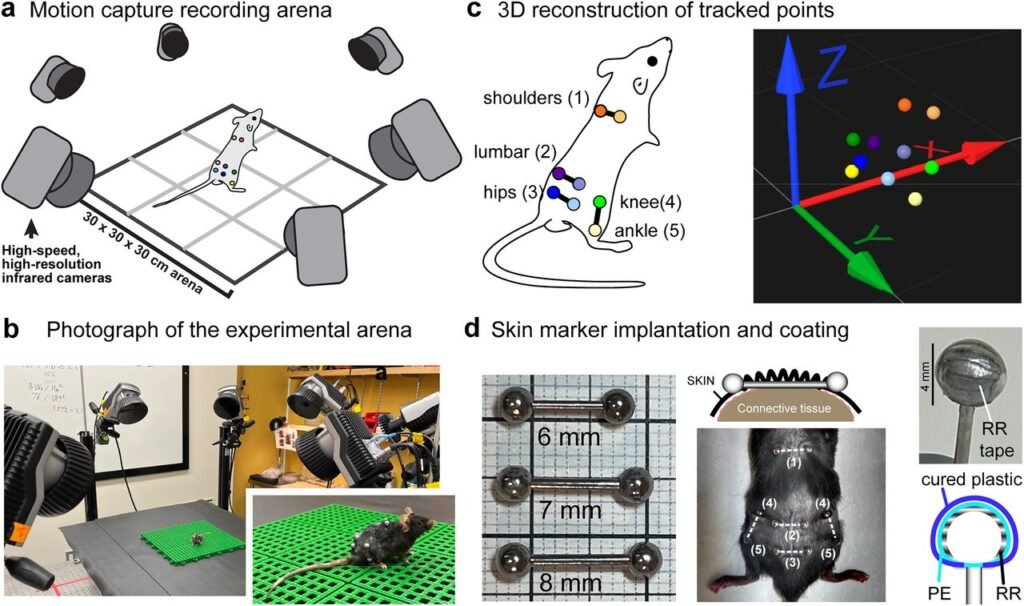When it comes to studying neurological disorders like Parkinson’s, mouse models are the unsung heroes of drug development. But while we’ve gotten better at engineering mice to mimic human disease, tracking their movements—especially the subtle ones that matter most—has remained surprisingly crude. Traditional methods rely on video analysis or AI-assisted pose estimation, which often miss the nuance of tremors, gait shifts, or compensatory behaviors. Now, a team at the Okinawa Institute of Science and Technology (OIST) has borrowed a page from the entertainment industry to change that—using motion capture technology straight out of a Hollywood studio.
The system, developed by OIST’s Neuronal Rhythms in Movement Unit, uses reflective markers and a multi-camera setup to capture high-resolution, 3D movement data from freely moving mice. Think of it as a Pixar-grade rig, but for neuroscience. The researchers placed stainless steel, reflective-coated spheres at key points on the mice’s bodies—joints, limbs, tail base—to track full-body motion as the animals ran, climbed, and explored. The setup included three open arenas: a flat surface, a treadmill, and a climbing wheel, each surrounded by cameras that recorded the reflected light from the markers in real time.
The challenge, of course, wasn’t just technical—it was behavioral. Mice are small, fast, and notoriously fussy. They’ll chew off anything stuck to them, and even minor discomfort can alter their natural movement. To get around this, the team focused heavily on animal handling and acclimatization. Instead of using food rewards or restraint, they let the mice roam freely, gradually getting used to the markers and the open, wall-less arenas. The result? Stress-free animals and data that actually reflect how mice move in the wild—not just how they behave under pressure.
What makes this system stand out is its ability to detect both large-scale locomotion and micro-movements like tremors or subtle shifts in posture. That’s a big deal for modeling diseases like Parkinson’s, where early symptoms often manifest as barely perceptible changes in gait or limb coordination. By capturing these nuances, researchers can now build more accurate behavioral profiles and test the effects of new drugs with greater precision. It also opens the door to studying motor learning, fatigue, and recovery in ways that were previously out of reach.
Unlike AI-based pose estimation, which requires extensive training data and can struggle with occlusions or unusual poses, the marker-based system delivers clean, high-fidelity data without the need for post-hoc correction. It’s not just a better mousetrap—it’s a better mouse movie. And because the system is modular, it can be adapted to different experimental setups or even scaled for use with other small animals.
Article from OIST: Transforming mouse modeling with motion capture
Abstract from eNeuro: Accurate Tracking of Locomotory Kinematics in Mice Moving Freely in Three-Dimensional Environments

